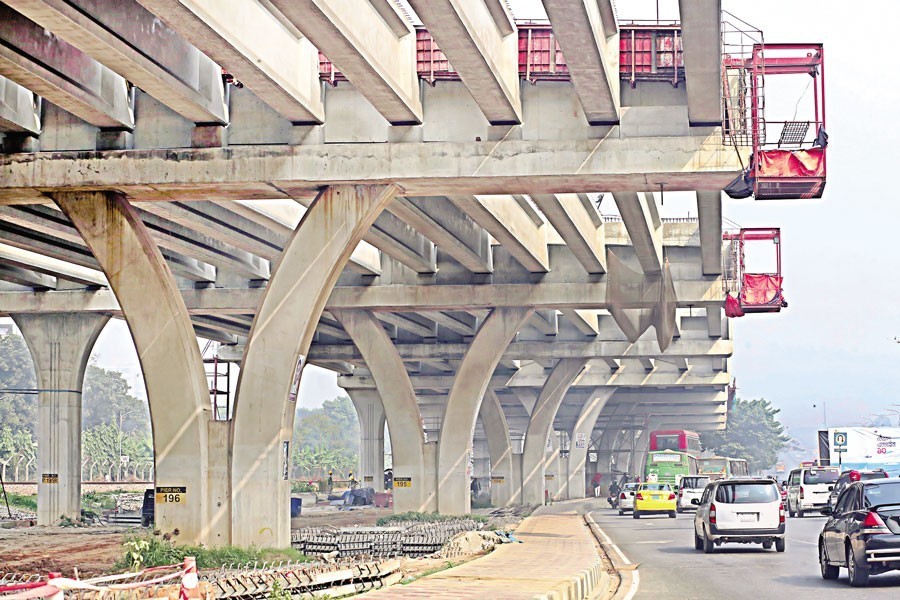From the beginning, it has been argued by many that the proposed Bus Rapid Transit (BRT) would bring little benefit in terms of easing the traffic congestion in Dhaka. Nevertheless, in 2010, the government decided to go ahead with constructing the first route of a 42km stretch between Shibbari in Gazipur and Jhilmil near Keraniganj in Dhaka. Within a couple of years, the distance was reduced to 20.5-kilometre from Gazipur to Dhaka Airport as Airport to Jilimil corridor seems unviable. The construction of the Gazipur-Airport BRT stretch, consisting of both flyover and road, has proved too hazardous and too costly.
The project has been flamboyantly packaged to give an impression that, once completed, it will change the landscape of the Uttara residential area in Dhaka and further north in Tongi and Gazipur. The project summary, posted on the BRT website, said: "Transit oriented development will be created as a new opportunity for residential and commercial development and reforming by introducing the BRT system in Dhaka-Gazipur city. Uttara and Gazipur area will be more attractive to residence and visitors accessing through BRT project. BRT will definitely contribute to the modernization and the greater prosperity by creating a transport culture and holistic solution for integrated urban transport system in Dhaka city."
There are, however, various reasons to believe that commuters will not get the expected benefit of the costly project, and it may be one of the poorly performing BRTs in Asia. Several BRT systems in Asia perform below expectations, and some are failures. These BRTs are unlikely to provide any benefit to either passengers or other road users. The origin of a failed or poorly performing BRT system generally lies in faults and errors made during the conceptual and planning phases.
The core idea behind a BRT is to build a dedicated corridor for public buses to rapidly carry and transfer commuters to different destinations. Thus, the BRT corridor occupies a good portion of roads used by other public and private vehicles. It means busy road spaces are narrowed, and congestion may increase. Dhaka BRT will be one of the few BRTs in the world that has both road level and flyover corridors. The flyovers are constructed to avoid possible congestion on roads and keep the mobility of buses smooth. Thus, the project's cost increased and reflected some flaws in the planning phase.
What drives the planners and policymakers to adopt the BRT is difficult to comprehend. It was much easier and less costly to focus on restructuring the movement of current public buses. Dhaka's chaotic and undisciplined public transport is mainly due to bad governance and wrong planning. The BRT seems to bypass the core road problem by creating a secured bus route, which means chaos outside the BRT corridor will continue, and non-BRT public-transport commuters will bear the burnt.
Being an expensive project, it is also likely that the fare of the BRT will be much higher than regular ones. The fare will be a primary indicator of the efficiency of the much-hyped BRT. Let us wait and see.


